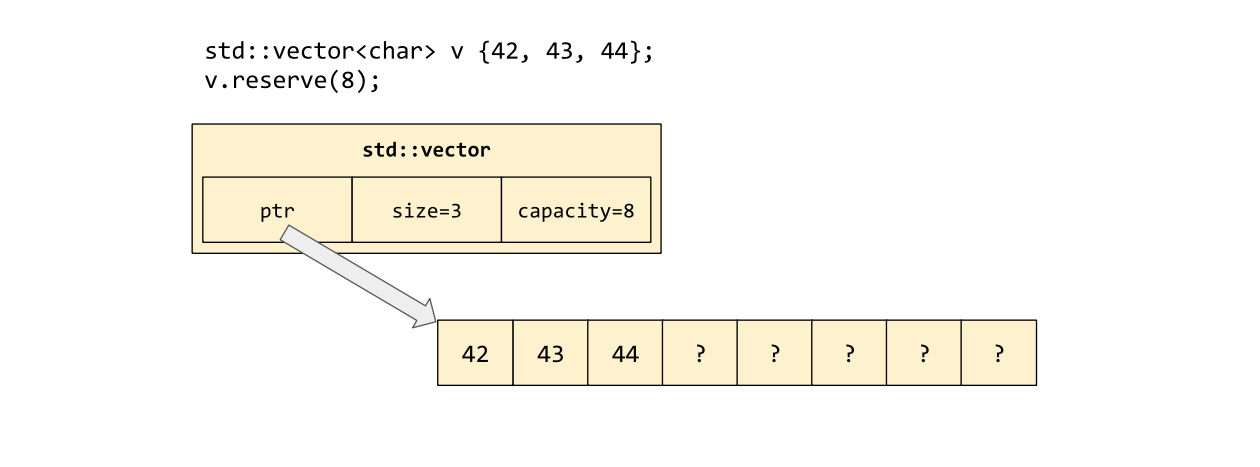The workhorse: std::vector<T>
std::vector represents a contiguous array of data elements, but allocated on the heap instead of on the stack. This improves on std::array in two ways: First, it allows us to create a really gigantic array without blowing our stack. Second, it allows us to resize the underlying array dynamically--unlike std::array<int, 3> where the size of the array is an immutable part of the type, a std::vector<int> has no intrinsic size. A vector's .size() method actually yields useful information about the current state of the vector.
A std::vector has one other salient attribute: its capacity. The capacity of a vector is always at least as large as its size, and represents the number of elements that the vector currently could hold, before it would need to reallocate its underlying array:

Other than its resizeability, vector behaves similarly to array. Like arrays, vectors are copyable (copying all their data elements, in linear time) and comparable (std...




































































